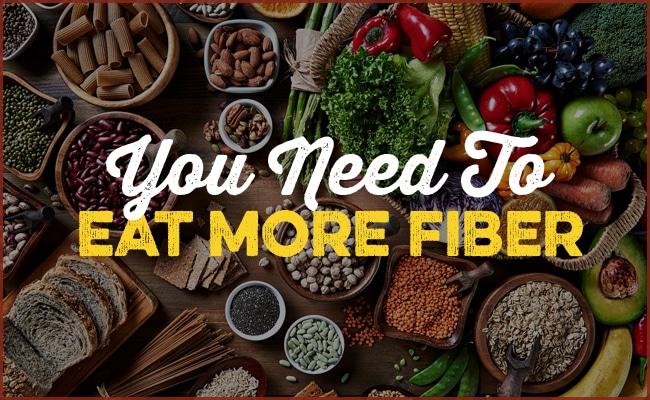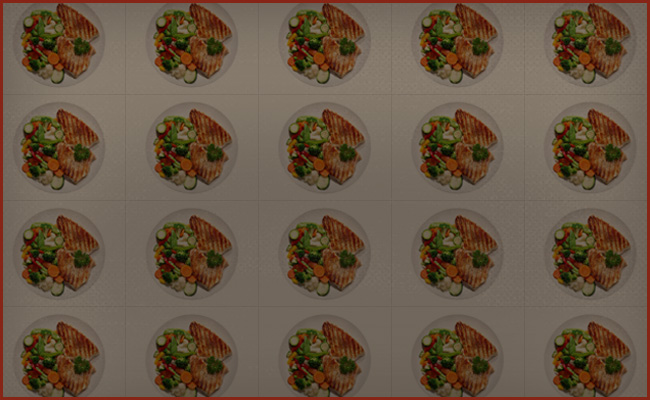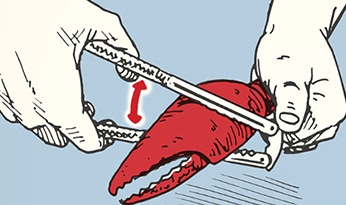
What if I told you there’s a magical nutrient out there that can help you lose weight, keep your blood sugar healthy, and reduce your chance of heart attack? Oh yeah, it also helps you have the best, most regular dumps of your life.
Well, dear reader, this magical nutrient is real. It’s dietary fiber. And chances are you’re not getting enough of it.
Read on for the glorious benefits of roughage and how to start eating more this year.
What Is Fiber?
Fiber is a type of carbohydrate that is found in plant-based foods. Unlike other carbohydrates, fiber cannot be fully digested by the body. Instead, it passes through the digestive system largely intact, providing various health benefits along the way.
There are two main types of fiber: soluble fiber and insoluble fiber.
Soluble Fiber. Soluble fiber dissolves in water and forms a gel-like substance in the colon. This type of fiber can help slow digestion, leading to a feeling of fullness and aiding in weight management. The gel-like substance that soluble fiber forms helps the stuff in your colon slide out nice and easy. Good sources of soluble fiber include oats, nuts, seeds, beans, legumes, and certain fruits and vegetables such as citrus fruits, apples, strawberries, peas, and potatoes.
Insoluble Fiber. Insoluble fiber does not dissolve in water. It adds bulk to your stool and acts as a brush in your colon to push things along in your intestinal tract, helping to keep your digestive system regular. Insoluble fiber can be found in the skins and peels of fruits and vegetables, legumes, and whole grains like wheat bran, whole wheat bread, whole grain couscous, and brown rice.
The Benefits of Fiber
Fiber comes with many health benefits, which is why doctors and your mom encourage you to increase your intake of it.
Supports Weight Loss. If you’re trying to lose weight, increasing fiber consumption will help out a lot. Like protein, fiber promotes satiety, or a feeling of fullness. When you eat more fiber, you’ll experience hunger less often.
Soluble fiber, in particular, slows digestion, keeping you satiated for longer periods. What’s more, high-fiber foods tend to be less energy-dense, meaning they provide fewer calories for the same volume of food compared to low-fiber options. Two hundred calories of fruits and vegetables occupy more space in your tum-tum than 200 calories of Devil Dog.
Regulates Blood Sugar. We’ve talked about insulin resistance and all the bad health outcomes that come with it on the podcast. Besides increasing exercise, one of the best things you can do to stave off insulin resistance is upping your fiber intake. One study found that increasing your fiber intake to 30-40 grams daily can reduce your risk of insulin resistance and developing type 2 diabetes by 20-30%.
Fiber helps regulate blood sugar by slowing down the digestion and absorption of dietary carbohydrates. Instead of having glucose spikes after you eat a meal with carbs, fiber puts a brake on things so your blood sugar stays in a healthier range.
Makes You a “Regular” Guy. Man, nothing feels better than having a daily constitutional. And nothing helps you have regular poops like fiber.
Both soluble and insoluble fiber work together to keep you regular. Insoluble fiber gives your stool bulk and helps keep things moving along the tubes of your digestive tract; soluble fiber forms a gel that keeps your stool slick so you don’t have to strain when you take care of business.
Supports Heart Health. Soluble fiber can help lower LDL cholesterol levels (aka the “bad cholesterol”) by binding to cholesterol in the digestive tract and preventing it from hitting your bloodstream. If you want to keep the ol’ ticker healthy, ask for an extra serving of veggies.
Supports a Healthy Microbiome. There’s a lot of talk these days about “gut health.” When people mention gut health, they’re talking about your gut microbiome. This is a community of good bacteria that lives inside your digestive system and helps digest food as it passes through your body. Besides aiding digestion, our gut microbiome plays a vital role in our immune system. The gut microbiome has also been shown to affect our mental health. Studies have demonstrated a connection between the health of your microbiome and depression.
You can increase your gut health by increasing the fiber in your diet. That’s because fiber acts as a prebiotic in your digestive system. Think of prebiotics as food for the healthy bacteria in your gut. When you increase your intake of fibrous food, you’re giving your gut bacteria the food it needs to aid your digestion, strengthen your immune system, and improve your mood.
How Much Fiber Do You Need?
The American Heart Association and the American Diabetes Association recommend that adults get 25 to 38 grams of fiber daily. The USDA recommends consuming 14 grams of fiber for every 1,000 calories you consume. So, if you eat 2,500 calories a day, you should aim to get 35 grams of fiber per day.
However, most individuals fall short of these recommendations. One survey found that only 5% of Americans meet the daily fiber consumption recommendation. The average intake is around 16 grams per day.
Don’t Go Overboard on Fiber
Due to fiber’s ability to aid in weight loss, the temptation might exist to ratchet up your fiber consumption to the max.
Hold on there, pardner.
While fiber is good for you, too much is no bueno. First, overeating fiber can leave you feeling bloated, gassy, and uncomfortable. Second, because the body can’t break fiber down into glucose, it can’t contribute to muscle glycogen synthesis. Fiber can’t help fuel your muscles for heavy training sessions or other strenuous activities.
So aim for the daily recommended amount. Slowly work your way up to it to get your body used to the extra fiber and avoid uncomfortable side effects. Each week, add a few more grams to your daily diet until you’re getting around 30 grams a day. Then level off. Going above that amount won’t give you much more benefit.
How to Increase Your Fiber
If you’re reading this article, there’s a good chance you’re not getting enough fiber. Fortunately, it’s pretty dang easy to hit your daily recommended amount.
Up your intake of fruits and vegetables. Not only do fruits and vegetables provide fiber, but they also offer lots of good-for-you micronutrients.
Think whole grains. Bran, oatmeal, barley, and whole wheat are all high in fiber. Oatmeal is my primary source of fiber. I eat it for breakfast and even at lunch and dinner. (Yes, you can eat oatmeal savory!)
I’ve also used bran cereals to hit my fiber goals. Just dump some in Greek yogurt for a high-fiber, high-protein breakfast.
Nuts and seeds. Nuts and seeds provide both soluble and insoluble fiber in addition to protein, healthy fats, and other vitamins and minerals. Chia seeds have been my go-to fiber-rich seed. A tablespoon has 4 grams of fiber as well as a healthy dose of omega-3 fatty acids which is good for heart health. I just put some in my yogurt for a snack.
Beans. Beans are the musical fruit that makes you toot. They may cause flatulence, but they’re a quality source of fiber. Cook yourself a big pot of pinto beans for the week and eat them for breakfast with your eggs or put them on some nachos for dinner.
Fiber wraps. Eating low-carb/high-fiber wraps is a really easy way to hit your daily fiber goal. My go-to high-fiber wrap is the Xtreme Wellness tortilla. One large wrap gives you a whopping 17 grams of fiber, thanks to the whole wheat and flax seed. If you’re aiming for 35 grams of fiber a day, that’s half of your daily fiber with one wrap! Talk about bang for your buck. I scramble eggs and egg whites with a little cheese, put it in the wrap, and eat that for breakfast every day. (Here’s why I eat the same thing for breakfast and lunch every single day.)
Fiber supplements. If you increase the amount of the foods you consume from the above list, you should easily hit your daily fiber goals. If you’re still coming up short, consider supplementing with a fiber supplement. Most fiber supplements consist of either soluble or insoluble fiber. Either one is fine, but if you have an issue with bowel regularity, go with an insoluble fiber supplement. If your stool is hard, go with a soluble fiber to make it easier to pass. If you’re looking for a good overall fiber supplement, psyllium husk fits the bill; it’s mostly soluble fiber, but does have a bit of insoluble fiber, too.







